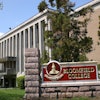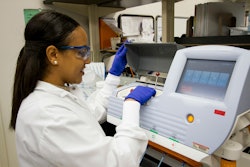House Democratic leaders on Thursday unveiled an $825 billion economic stimulus package with massive new education spending that goes far beyond a widely expected increase in federal Pell Grants.
While low-income college students would gain significantly under the package – with $15 billion earmarked for a $500 Pell increase – the package from the House Appropriations Committee would touch virtually all areas of the education pipeline, from early childhood to higher education.
Major K-12 programs – most of them serving at-risk youth – would gain more than $40 billion in new funds. In addition, states and localities would get another $39 billion on top of that to offset education cuts caused by the economic downturn. This fiscal relief would flow to public colleges and universities, including public minority-serving institutions, as well as K-12 school districts.
“With our economy worsening by the day, bold and strategic investments are needed to jumpstart our economy and drive long-term growth and competitiveness,” said Rep. George Miller, D-Calif., chairman of the House Education and Labor Committee.
House Speaker Nancy Pelosi, D-Calif., wants Congress to approve a stimulus bill by Feb. 13. If enacted, the House plan would provide the new infusion of funds over a two-year period.
After years of economic gridlock for many education programs, the new package would open up major new sources of funds for students, schools, colleges and academic departments. Aside from Pell Grant funds and state fiscal relief, the package includes:
n $6 billion to modernize higher education facilities, with a focus on technology improvements and energy-efficient upgrades;
n $13 billion for the Title 1 program, the chief federal initiative in K-12 education for disadvantaged students;
n $13 billion for the Individuals with Disabilities Education Act;
n $14 billion for modernization of K-12 facilities;
n $2.1 billion for Head Start early childhood services;
n $4 billion for job training assistance;
n $490 million for college work/study programs; and
n $300 million for improved teacher quality.
The House committee’s summary of the new spending runs 13 pages alone, with multiple new initiatives in some areas. In science and technology, for example, the package contains:
n $10 billion for new scientific facilities nationwide;
n $3 billion for the National Science Foundation, including $300 million for new equipment shared by colleges and scientists and $200 million to modernize higher education science and engineering labs;
n $300 million for new or improved college science research buildings; and
n $1 billion for modern “21st century classrooms” in K-12 schools.
“The economy is in a crisis not seen since the Great Depression,” the committee said in a statement outlining the plan.
While Democrats control a majority in the House and Senate, House Republicans said the plan will face scrutiny since its price tag is almost as large as the annual discretionary budget of the federal government.
“We have serious concerns about its size, scope and astronomical cost,” said Rep. Jerry Lewis, R-Calif., senior Republican on the Appropriations Committee. “The legislation appears to blanket government programs in spending with little thought toward real economic results.”
Email the editor: [email protected]
Click here to post and read comments
© Copyright 2005 by DiverseEducation.com





















